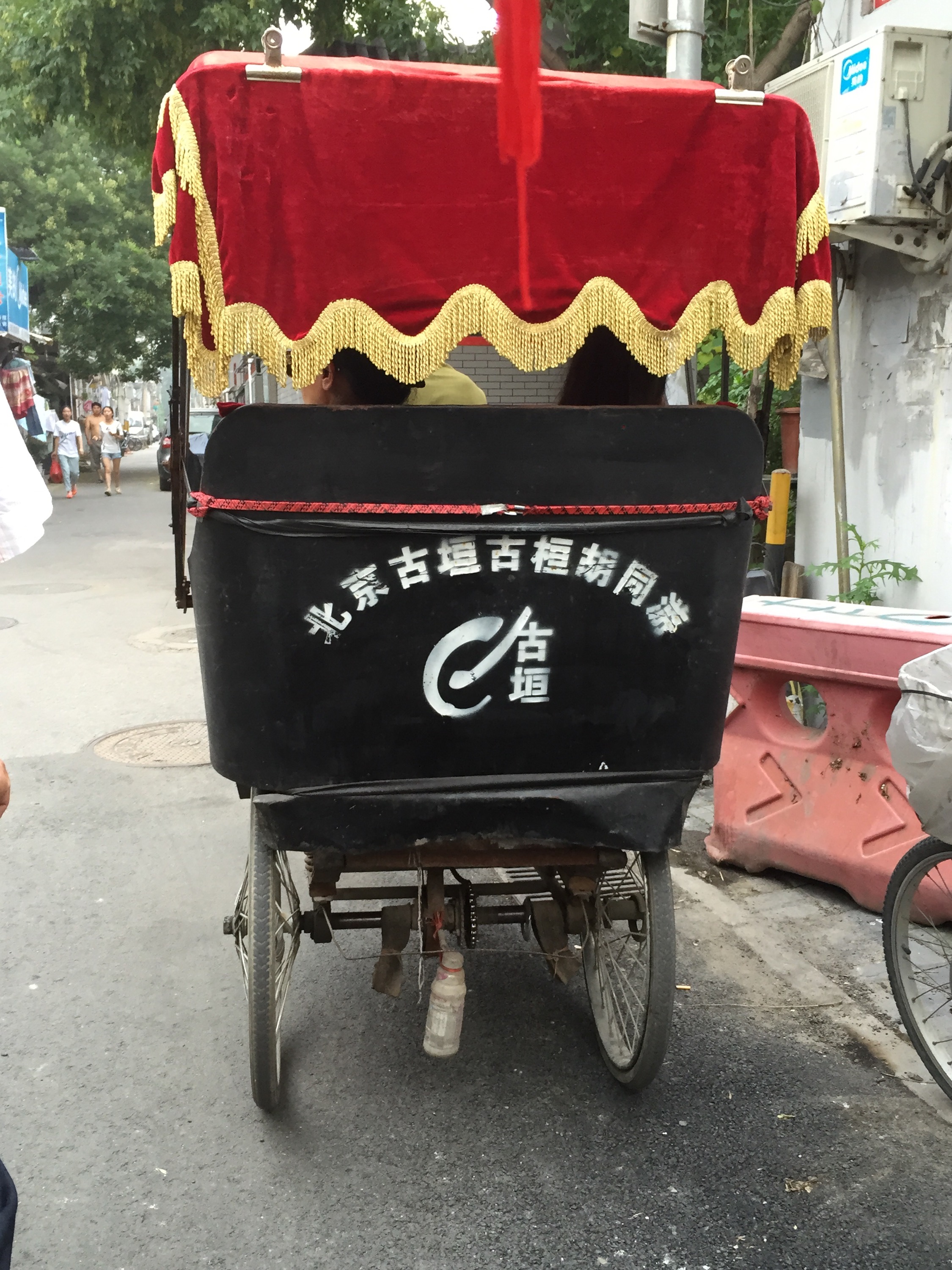So this was a Bucket List Day. We went this morning to climb up to the Great Wall of China. I’m not sure what to say about it really, it is one of the most famous endeavours of man in the entire world – up there with the pyramids as one of the Seven Wonders of the World.
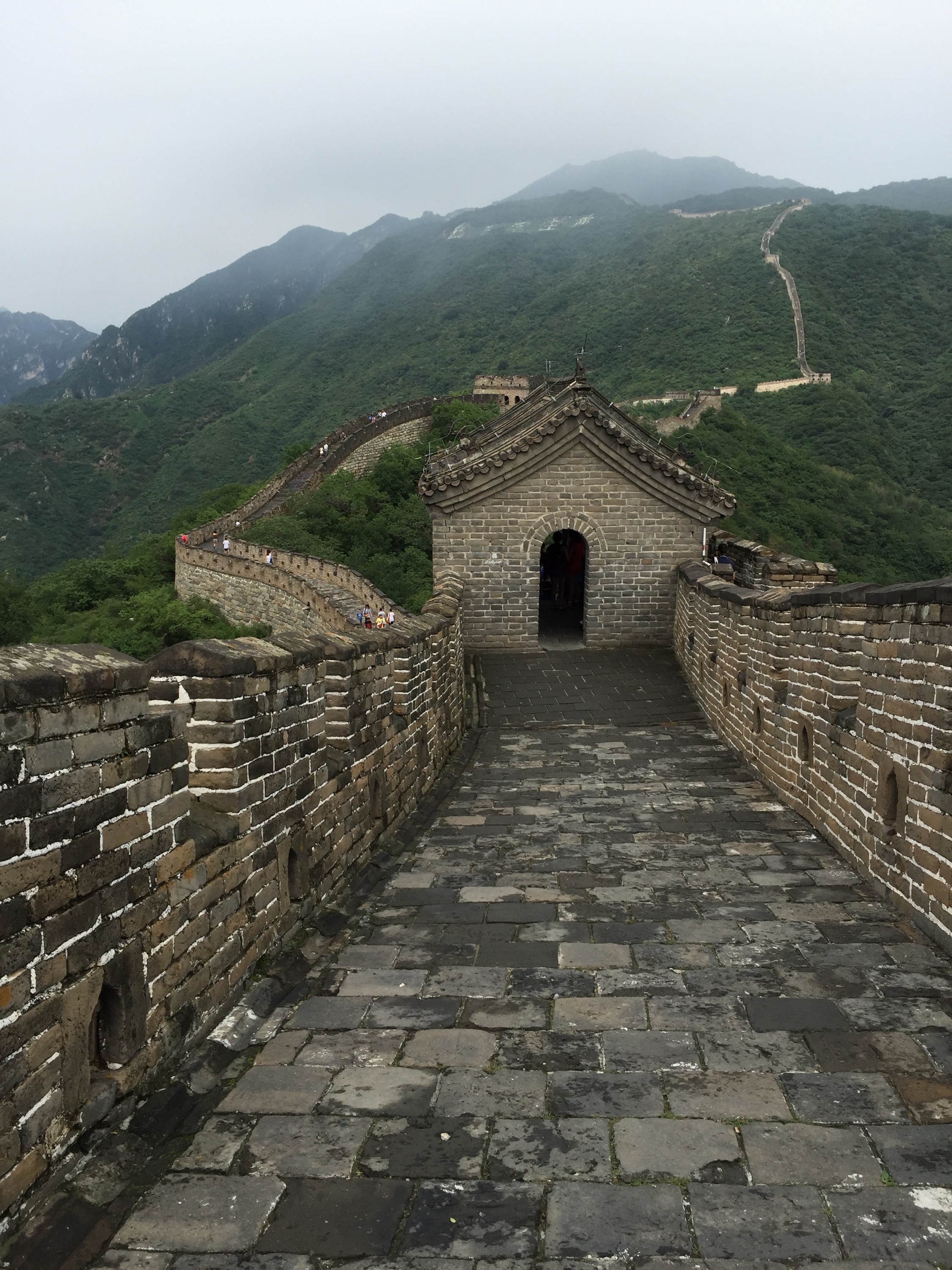 The building of the Great Wall started over 2200 years ago during the Qin Dynasty, when the then Emperor decided to build a wall to stop the Tibetan invaders from the North. The Tibetan people were stronger and more fierce than the Chinese and they were rightly fearful as they were constantly under attack. The Qin Emperor who started to build the Great Wall set 100 years of construction in motion, with farmers, soldiers and ordinary people shanghaied into building the wall. Over 1,000,000 people died during this first 100 years of construction – all of whom were buried within the wall.
The building of the Great Wall started over 2200 years ago during the Qin Dynasty, when the then Emperor decided to build a wall to stop the Tibetan invaders from the North. The Tibetan people were stronger and more fierce than the Chinese and they were rightly fearful as they were constantly under attack. The Qin Emperor who started to build the Great Wall set 100 years of construction in motion, with farmers, soldiers and ordinary people shanghaied into building the wall. Over 1,000,000 people died during this first 100 years of construction – all of whom were buried within the wall.
 After the Qin Dynasty came the Han Dynasty and the work on the wall continued for several more generations … another 120 years of work on the wall and approximately another 1,000,000 died working in the hazardous and freezing conditions of the mountainous terrain. Rock was all moved by horse and camel, and by men over land.
After the Qin Dynasty came the Han Dynasty and the work on the wall continued for several more generations … another 120 years of work on the wall and approximately another 1,000,000 died working in the hazardous and freezing conditions of the mountainous terrain. Rock was all moved by horse and camel, and by men over land.
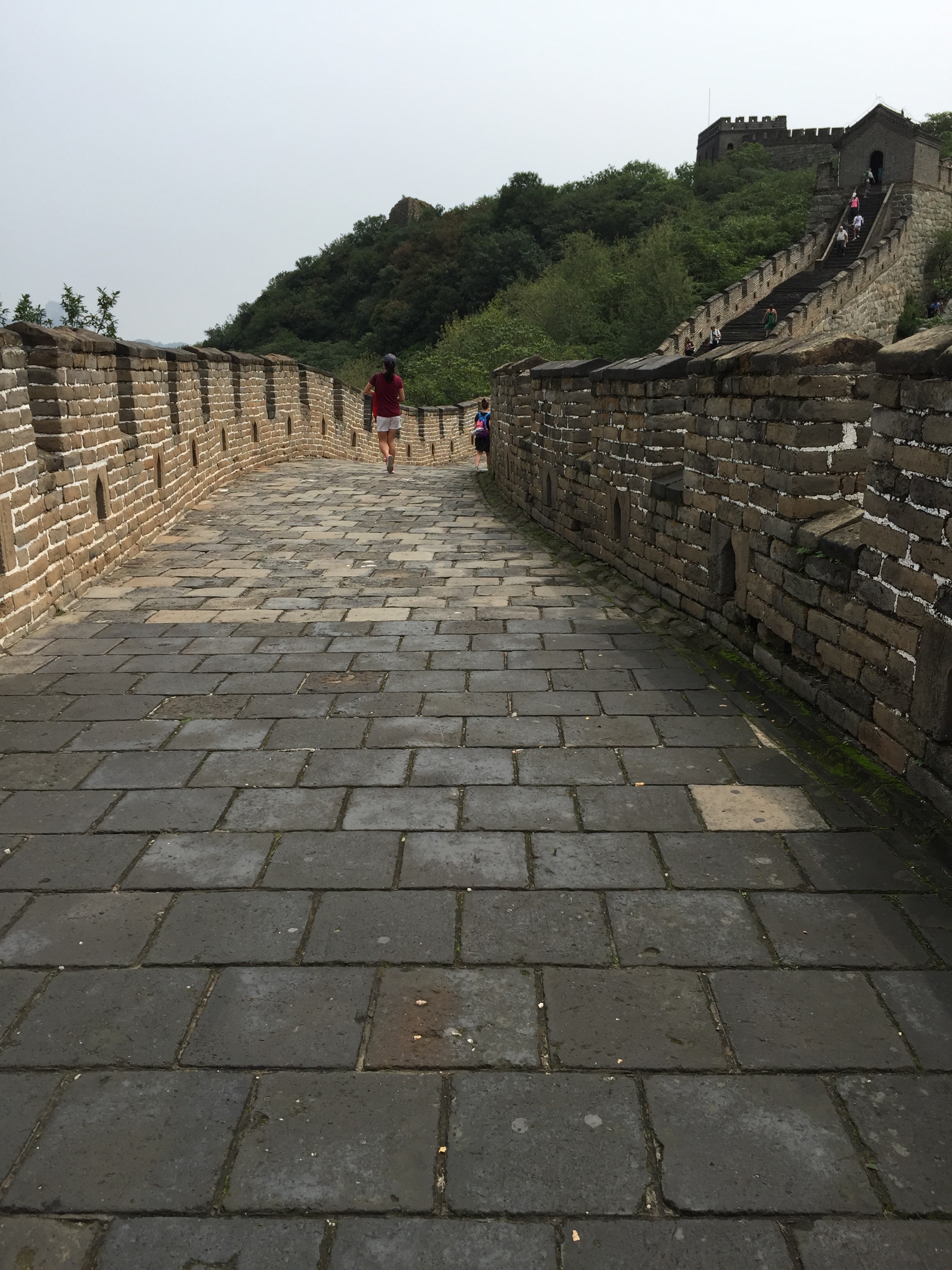 From there the Song Dynasty took over (approximately 1400 years ago now), and the wall continued to be built, with rock being moved over 1200km over water by rivers. The workers would dig trenches to allow water to freeze so rock could be dragged more easily over the ice by pack animals – horses, oxen and donkeys. Another half a million people died during this period of building.
From there the Song Dynasty took over (approximately 1400 years ago now), and the wall continued to be built, with rock being moved over 1200km over water by rivers. The workers would dig trenches to allow water to freeze so rock could be dragged more easily over the ice by pack animals – horses, oxen and donkeys. Another half a million people died during this period of building.
When the Tang Dynasty took over another 150 years and several generations of Emperors prioritised securing the northern borders throwing more and more resources to continue building the wall. Another 1,000,000 workers are estimated to have died during this 150 year building period.
 Following this, the Ming Dynasty also continued to build the wall for another 200 years. The Ming Dynasty had three priorities – Build the Wall. Save food to feed the people. Give the people property… (Ming Emperors must have been a bit Machiavellian way before their time).
Following this, the Ming Dynasty also continued to build the wall for another 200 years. The Ming Dynasty had three priorities – Build the Wall. Save food to feed the people. Give the people property… (Ming Emperors must have been a bit Machiavellian way before their time).

It was a section of Ming Dynasty Wall that we visited today in Mutianyu, built over 600 years ago. The Great Wall stretches over 21,000km across the northern Chinese border, and when you look at the mountain ranges it crosses, it is a truly remarkable feat of human endeavour. All up around 5,000,000 people died during the construction and all are buried deep within the walls.
 We walked ten minutes up a neat, modern paved walkway that was ridiculously steep, to reach a modern and convenient cable car that took us to the top of the mountain so we could walk a section of the wall… and once on top of this incredible fortress that stretches as far as the eye can see in either direction, all I could think was how on earth did those men get these huge building stones all the way up here without any modern machinery?! It beggars belief.
We walked ten minutes up a neat, modern paved walkway that was ridiculously steep, to reach a modern and convenient cable car that took us to the top of the mountain so we could walk a section of the wall… and once on top of this incredible fortress that stretches as far as the eye can see in either direction, all I could think was how on earth did those men get these huge building stones all the way up here without any modern machinery?! It beggars belief.
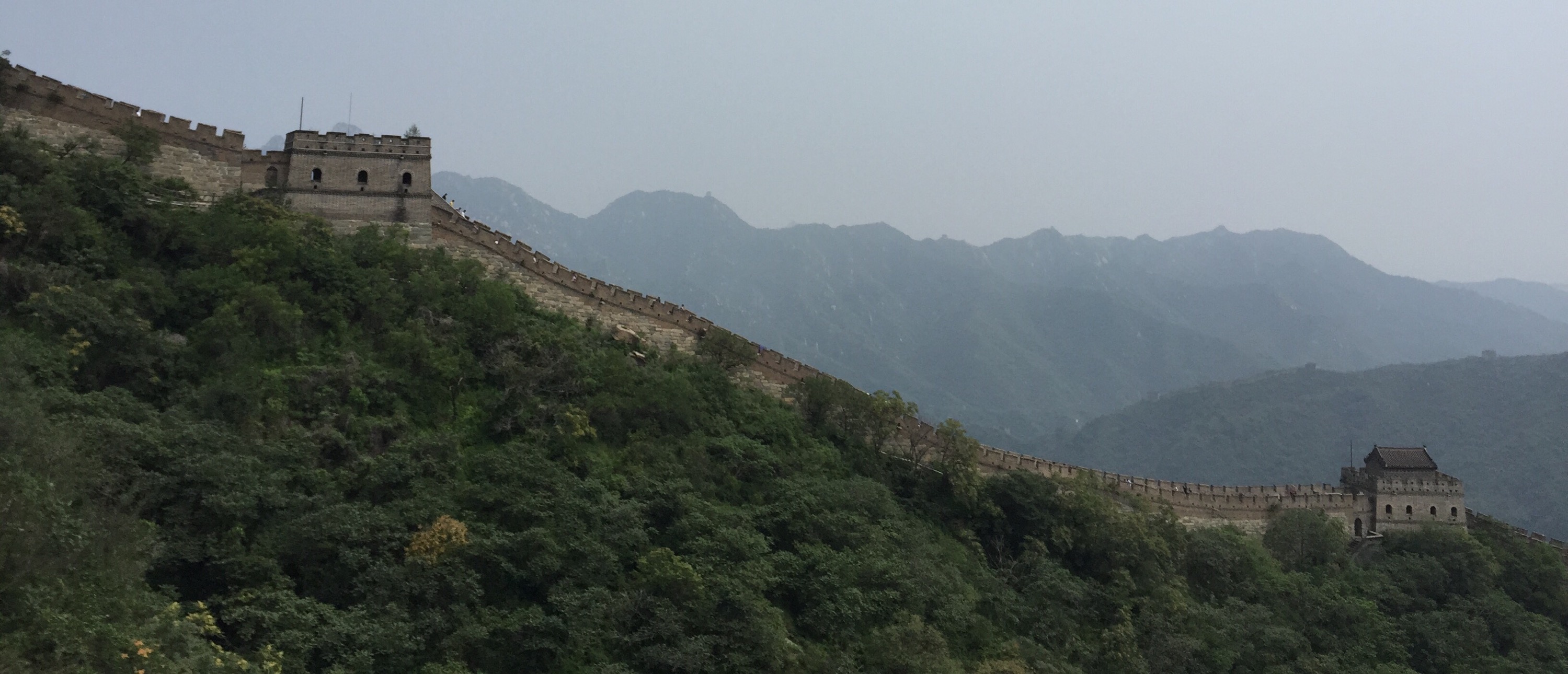 In China, our guide Kelly, tells us they have a saying, ‘You are not true man until you climb the Great Wall’, and I can well understand that idiom stems from people making a pilgrimage (sans cable car) up the mountain to spend time walking on the Great Wall.
In China, our guide Kelly, tells us they have a saying, ‘You are not true man until you climb the Great Wall’, and I can well understand that idiom stems from people making a pilgrimage (sans cable car) up the mountain to spend time walking on the Great Wall.
After our monumentally mind blowing morning, we stopped at a nearby restaurant for a ‘farmer’s lunch’… which sounded like it would be simple fare, but turned out to be another overwhelming Chinese banquet consisting of about 8 different dishes for our table of six adults and two small very fussy eating children. So much food. I tried a couple of dishes, but avoided quite a few of the spicier looking dishes.
We had a long drive back to Beijing – Mutianyu is a less popular area of the wall as it is 90 minutes drive out of the city, and obviously much favoured by foreigners as we simply do not enjoy the crush and press of the crowds. So there was a higher percentage of foreigners where we were today, and less domestic Chinese tourists. Mind you it was still plenty busy enough for my liking, so I can’t imagine what it is like where the Chinese tourists (who are used to the crush) go to see the Wall.
When we arrived back in Beijing, we stopped for a quick look at some of Beijing’s newest landmark architecture – the 2008 Beijing Olympic’s Athletics Centre, also known as The Birds Nest, and the Aquatic Centre, known as The Water Cube. As soon as we returned to the city, the cloying heat smacked us in the face again and even the short walk to see these buildings was draining. Personally, a photo op like these doesn’t really do it for me, and I wasn’t really paying attention when we were told who designed them etc, but all I really took in was that neither building was designed by Chinese architects, and that they had been done by some famous designers from the Netherlands.
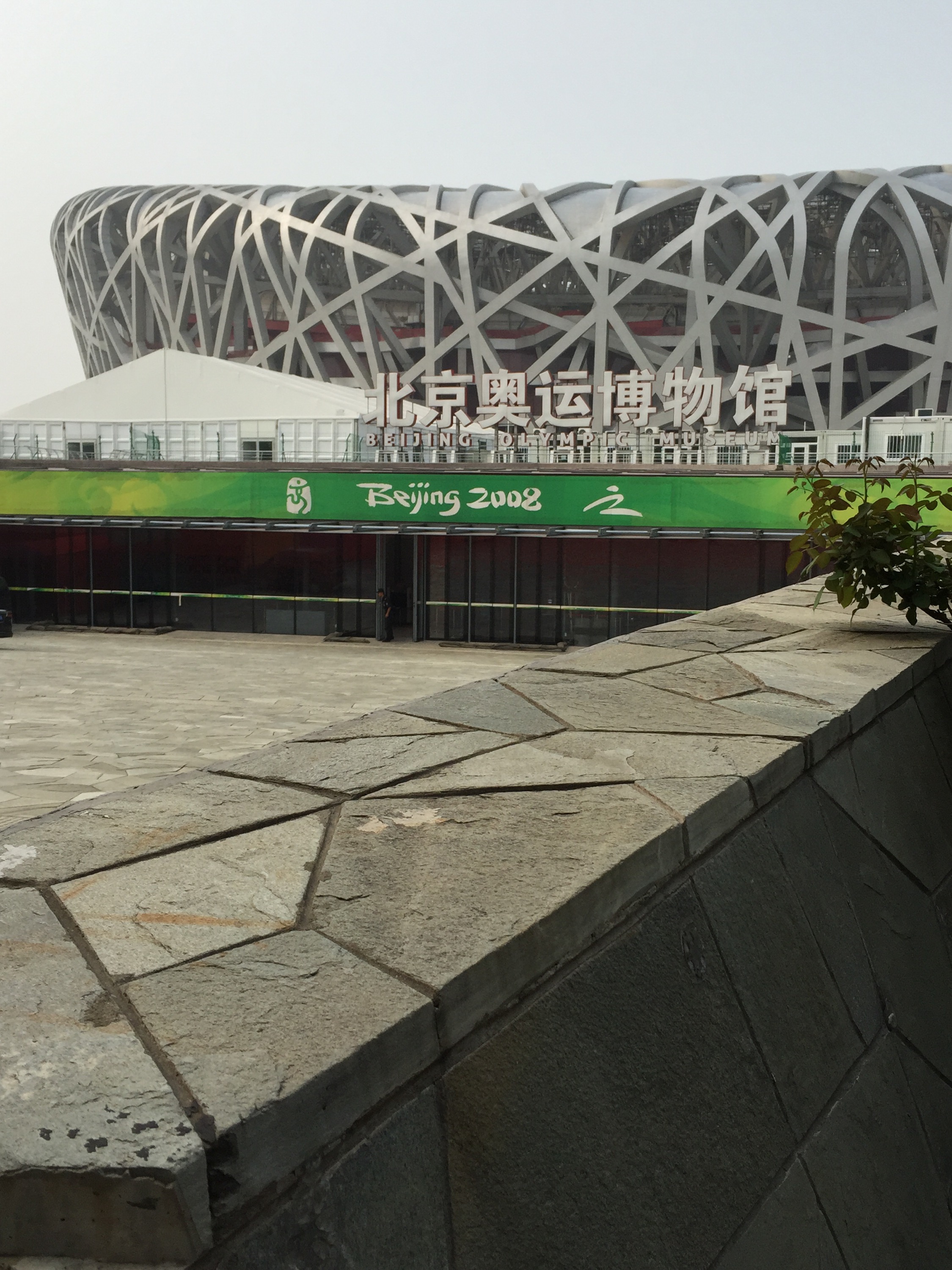
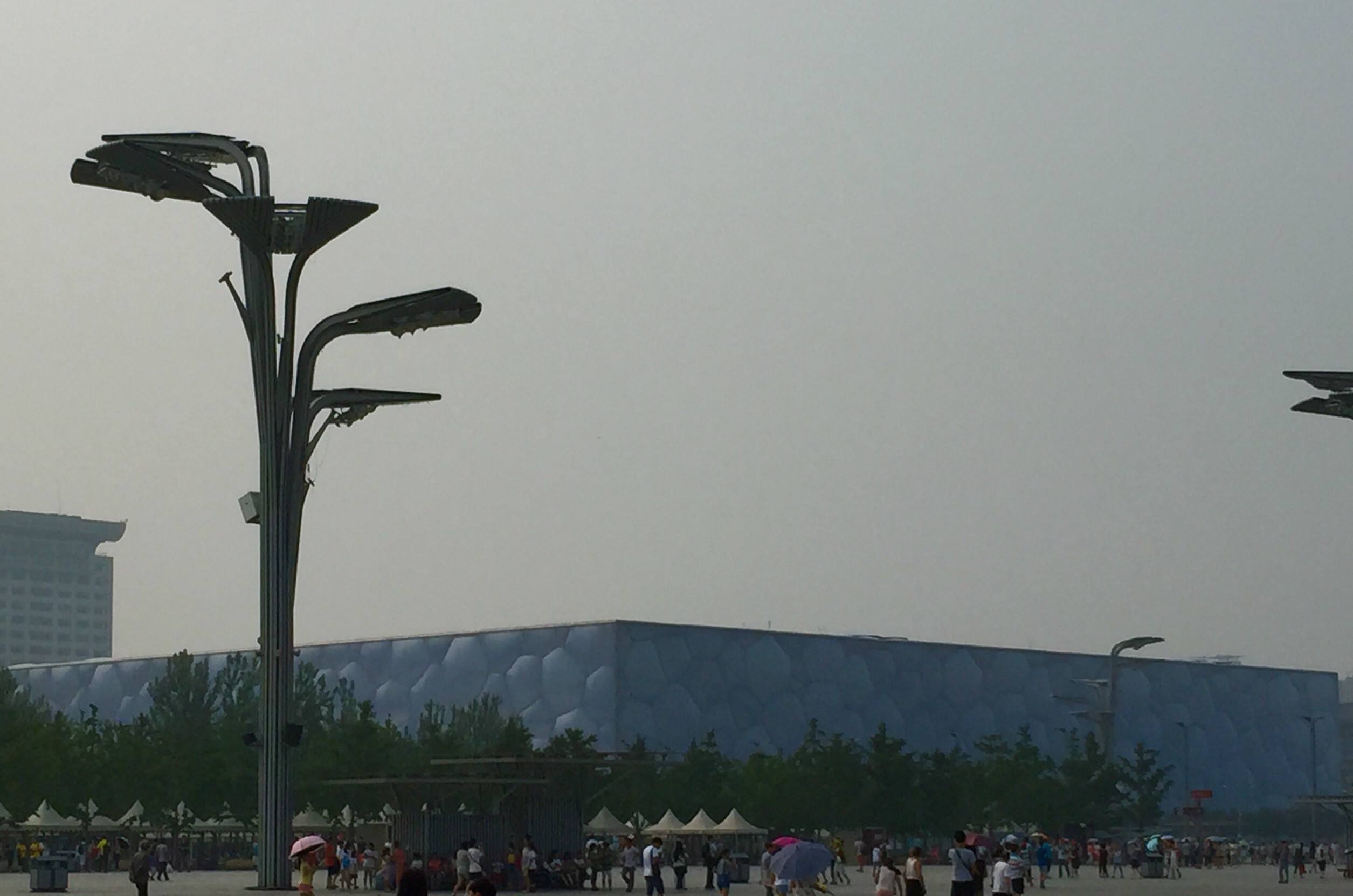 Yesterday we spent the entire day looking at how the Imperial family lived, so this afternoon’s plan was to show us how the common people live. So, after lunch we we to see the Hutongs by rickshaw – these are basically Beijing suburbs (the word Hutong originally meant ‘water well’ in Mongolian, but now refers to the Beijing suburbs) . Personally I am not comfortable with this sort of ‘slum tourism’. I feel it is an invasion of privacy and I am pretty sure if I lived there I would not be too pleased with a string of wealthy tourists traipsing through the neighbourhood in rickshaws every afternoon. Anyway, it is what was on our tour, so off we went. The Hutong areas used to be filled mostly with very wealthy ‘Four Beam’ families. You see, the number of ‘beams’ represented out front of your home marked your status in society. Some people have Four Beams, some had Two Beams, and some had none. Four Beam families only married with other Four Beam families and so on and so forth. Nowadays, people marry whomever they want and less arranged marriages occur in China than tradition used to dictate, however the profession of matchmaker still exists and these people often help very busy working Chinese people meet their prospective mates.
Yesterday we spent the entire day looking at how the Imperial family lived, so this afternoon’s plan was to show us how the common people live. So, after lunch we we to see the Hutongs by rickshaw – these are basically Beijing suburbs (the word Hutong originally meant ‘water well’ in Mongolian, but now refers to the Beijing suburbs) . Personally I am not comfortable with this sort of ‘slum tourism’. I feel it is an invasion of privacy and I am pretty sure if I lived there I would not be too pleased with a string of wealthy tourists traipsing through the neighbourhood in rickshaws every afternoon. Anyway, it is what was on our tour, so off we went. The Hutong areas used to be filled mostly with very wealthy ‘Four Beam’ families. You see, the number of ‘beams’ represented out front of your home marked your status in society. Some people have Four Beams, some had Two Beams, and some had none. Four Beam families only married with other Four Beam families and so on and so forth. Nowadays, people marry whomever they want and less arranged marriages occur in China than tradition used to dictate, however the profession of matchmaker still exists and these people often help very busy working Chinese people meet their prospective mates.
 Anyway, the Hutongs are no longer dominated by Four Beam families as during the Cultural Revolution, Chairman Mao made an edict that the wealthy families had to make way for less fortunate ones, and spaces that held one Four Beam family were suddenly supporting up to ten families of all levels of status – many of these merged families were the slaves of the former Four Beam families. So now, the relatively rich live right next door to the very poor with the houses being passed down through only a couple of generations so far. Land in the Hutongs fetches around 200,000 yuan per square meter (about AU$50,000 per square meter)… though it is hard to believe once you see the area. Many of the private homes here don’t even have private bathrooms, and rely on communal bathroom areas which I have to say are positively disgusting, you can smell them a mile off. I took a video of us traversing through the Hutong by rickshaw to capture the chaos and colour and noise of the area, but it certainly doesn’t captures the strong smells encountered as we rode through – from gasoline, to rubbish, to incense, to sewerage, to fresh fruit and flowers, to the stench of urine. It was quite the experience.
Anyway, the Hutongs are no longer dominated by Four Beam families as during the Cultural Revolution, Chairman Mao made an edict that the wealthy families had to make way for less fortunate ones, and spaces that held one Four Beam family were suddenly supporting up to ten families of all levels of status – many of these merged families were the slaves of the former Four Beam families. So now, the relatively rich live right next door to the very poor with the houses being passed down through only a couple of generations so far. Land in the Hutongs fetches around 200,000 yuan per square meter (about AU$50,000 per square meter)… though it is hard to believe once you see the area. Many of the private homes here don’t even have private bathrooms, and rely on communal bathroom areas which I have to say are positively disgusting, you can smell them a mile off. I took a video of us traversing through the Hutong by rickshaw to capture the chaos and colour and noise of the area, but it certainly doesn’t captures the strong smells encountered as we rode through – from gasoline, to rubbish, to incense, to sewerage, to fresh fruit and flowers, to the stench of urine. It was quite the experience.
From here we reached for the hand sanitiser and head off to our dinner at the famous Bian Yi Fang Restaurant. This restaurant has apparently been on this site serving Peking Duck for 800 years now. Kelly was kind enough to inform us that our duck would not be 800 years old, but that they would get us a fresh one. 🙂 We were served another enormous banquet – at least 9 different dishes on the table for 7 people before the duck was even served. While we waited, we tried a local rice spirit called, Bai Jui – with 56% alcohol!!! And bloody hell doesn’t that stuff pack a punch. It tastes like rubbing alcohol smells! That or really cheap and strong tequila. Whoa.

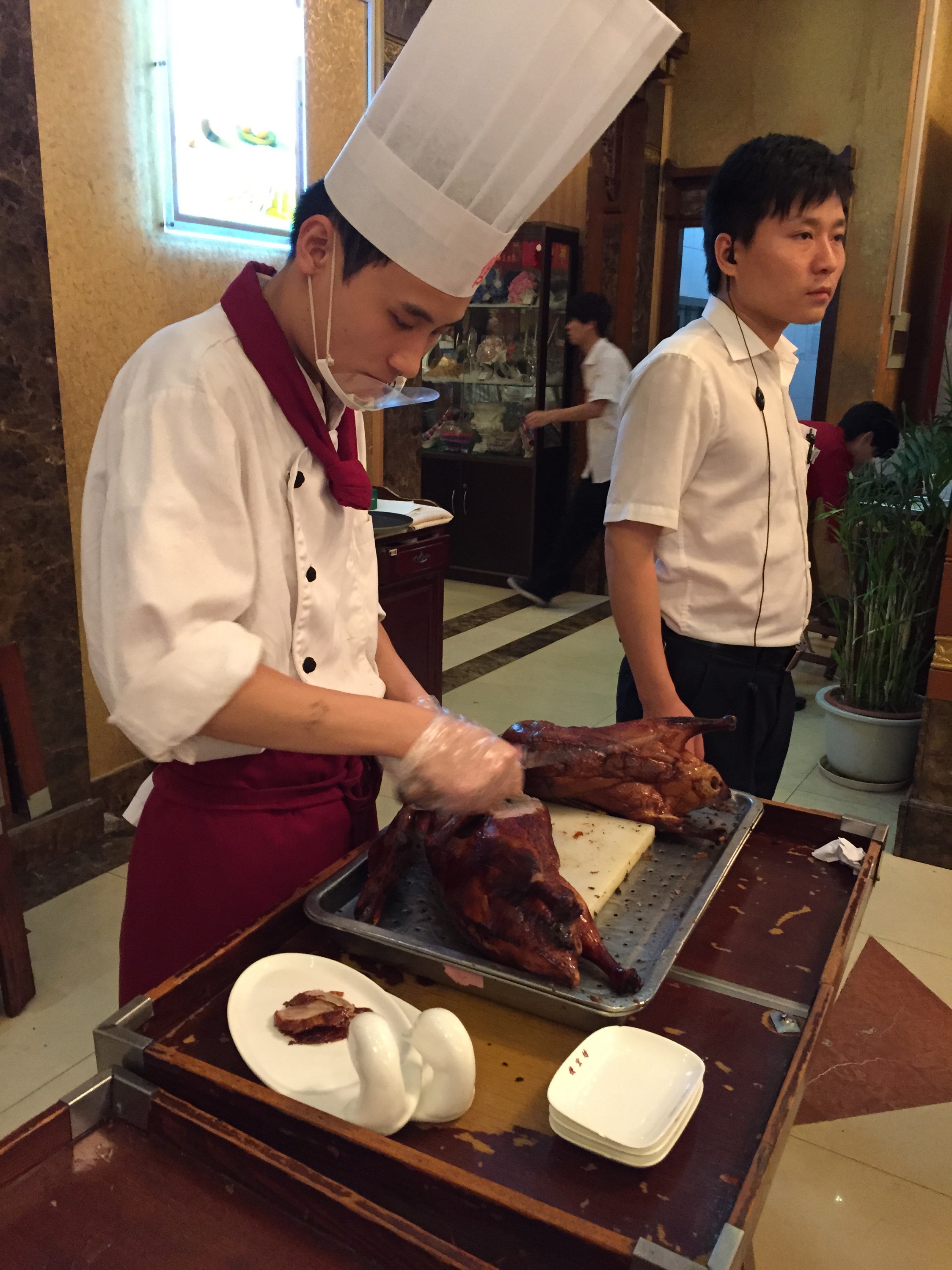
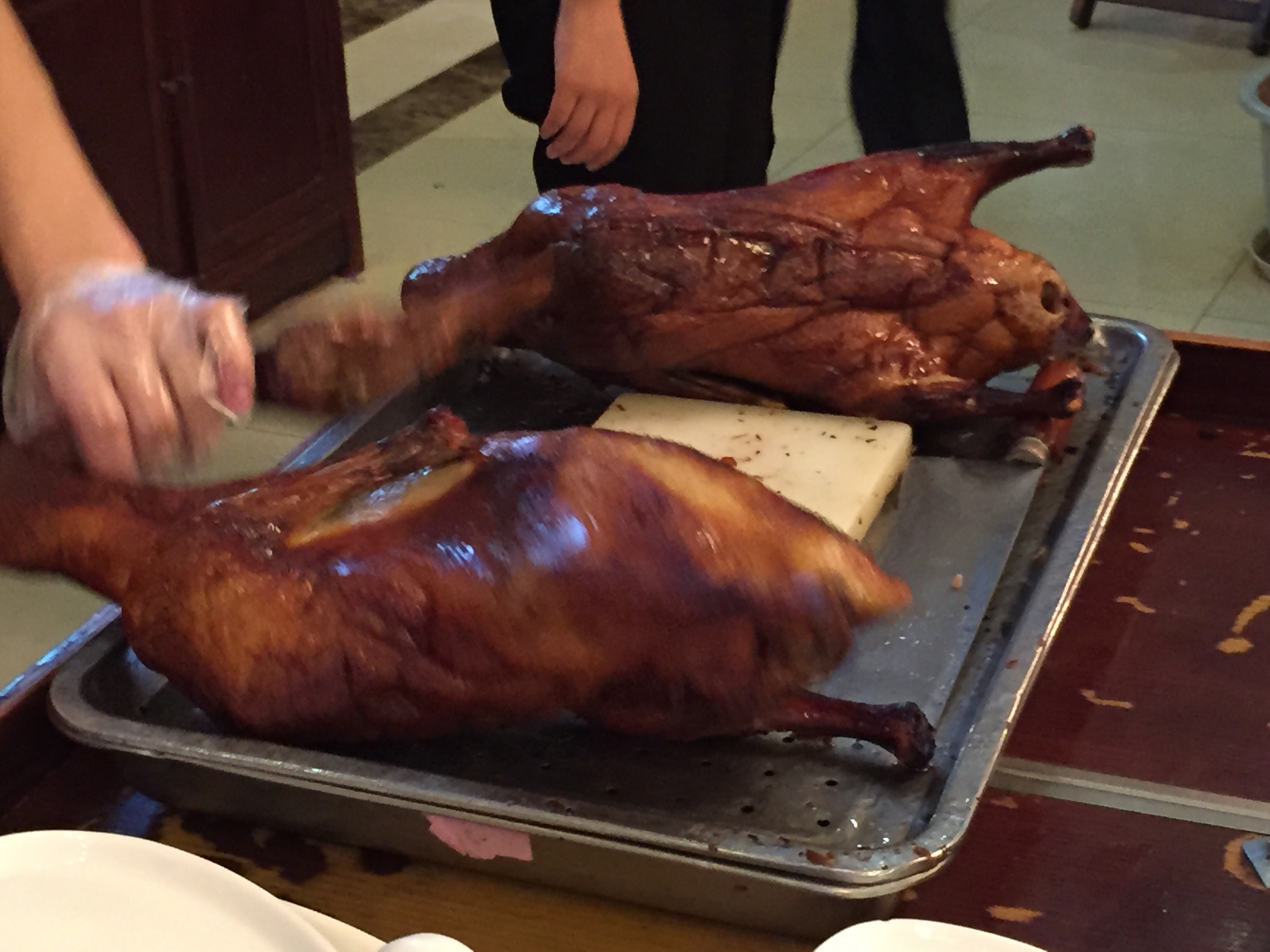
 The Peking Duck was absolutely delicious, probably the best Asian meal I have ever tried, well worth trying if you are in Beijing. So it seems in just a few short days we have hit a lot of the Beijing highlights – The Forbidden City, the Summer Palace, The Great Wall of China, the Hutongs and tried the famous Peking Duck. So tomorrow, onwards to Xian.
The Peking Duck was absolutely delicious, probably the best Asian meal I have ever tried, well worth trying if you are in Beijing. So it seems in just a few short days we have hit a lot of the Beijing highlights – The Forbidden City, the Summer Palace, The Great Wall of China, the Hutongs and tried the famous Peking Duck. So tomorrow, onwards to Xian.
PS: sorry if I got some of my dynasties mixed up! Our guide has fantastic Enflish but a thick accent. 🙂


